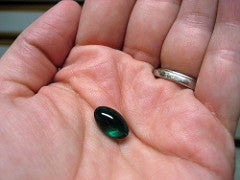Vitamin D Winter
November 11, 2009 3 min read

Vitamin D is one of the main topics of my forthcoming book, The Sun Companion. It is critical for you and your family to get this vitamin/hormone in the right amount.
I used to think that I was not deficient. After all, I live in California and I am outside biking, walking and gardening – without sunblock most of the time. Worst of all, I was losing bone mass because of it.
At the time I did not understand the suns ultraviolet rays and when the rays were strong enough to manufacture this vital nutrient.
Not all sunlight produces vitamin D. In fact, most of North America is now in, Vitamin D Winter. Only one ultraviolet ray (UVB), produces vitamin D when it interacts with cholesterol just under the top layer of skin.
The UVB ray is strongest when the sun is directly overhead. When the sun is at a 45-degree angle or less no vitamin D will be produced. The closer one lives to the equator the more potential there is to produce vitamin D.
Where I live, in the San Francisco Bay Area, vitamin D will not be produced through sun exposure from November through the end of March.
TIP: When your shadow is taller than you are, you will not produce vitamin D.
Vitamin D in a Nutshell
- Vitamin D converts to a powerful hormone with receptor sites throughout the body.
- Vitamin D deficiency has been related to the following conditions: Heart disease, elevated blood pressure, unexplained weight gain. Multiple sclerosis, dental disease and excessive cavities, multiple cancers including: breast, prostate, colon and lung.
- Vitamin D production is dependent on skin type, age, geographic location, atmospheric conditions (fog or smog) and more.
- Dietary sources of vitamin D alone are not enough.
- Vitamin D testing is strongly recommended for those who want to raise their vitamin D blood level to a safe and appropriate level with supplementation.
- Prescription vitamin D pills are most often the wrong form of vitamin D.
- Too much vitamin D supplementation may lead to health problems, especially if other nutrients are not in the right balance with vitamin D.
- Sensible sun exposure is the safest way to obtain vitamin D. However, this depends on many factors to be discussed in the teleseminar next week.
I have personally tested over 100 people this year and two had a normal blood level of vitamin D.
Breast Cancer and Vitamin D
Following is an excerpt from Science Daily (Oct. 10, 2009)
Women with breast cancer should be given high doses of vitamin D because a majority ofthem are likely to have low levels of vitamin D, which could contribute to decreased bone mass and greater risk of fractures, according to scientists at the University of Rochester Medical Center.
In a study of 166 women undergoing treatment for breast cancer, nearly 70 percent had low levels of vitamin D in their blood, according to a study being presented Thursday, Oct. 8, at the American Society of Clinical Oncology's Breast Cancer Symposium in San Francisco. The analysis showed women with late-stage disease and non-Caucasian women had even lower levels.
"Vitamin D is essential to maintaining bone health, and women with breast cancer have accelerated bone loss due to the nature of hormone therapy and chemotherapy. It's important for women and their doctors to work together to boost their vitamin D intake," said Luke
Cautionary note: do not take high levels of vitamin D unless you are tested and your practitioner is familiar with the use of vitamin D. Some doctors are recommending 50,000 IU each day! I do not agree with these high doses. The goal should be to reach 50 ng/ml, as tested from a specific blood test for 25, hydroxy vitamin D. Most people will require 2,000 – 10,000 each day to achieve that. We are all different so there is no, one size fits everyone with vitamin D doses.
Home Vitamin D Test Kit - this test kit is accurate and easy to use. It requires a finger prick of the finger rather than obtaining venous blood from the arm. This kit offers a convenient and cost effective way to test your vitamin D or your child’s vitamin D level.
Subscribe
Sign up to get the latest on sales, new releases and more …

